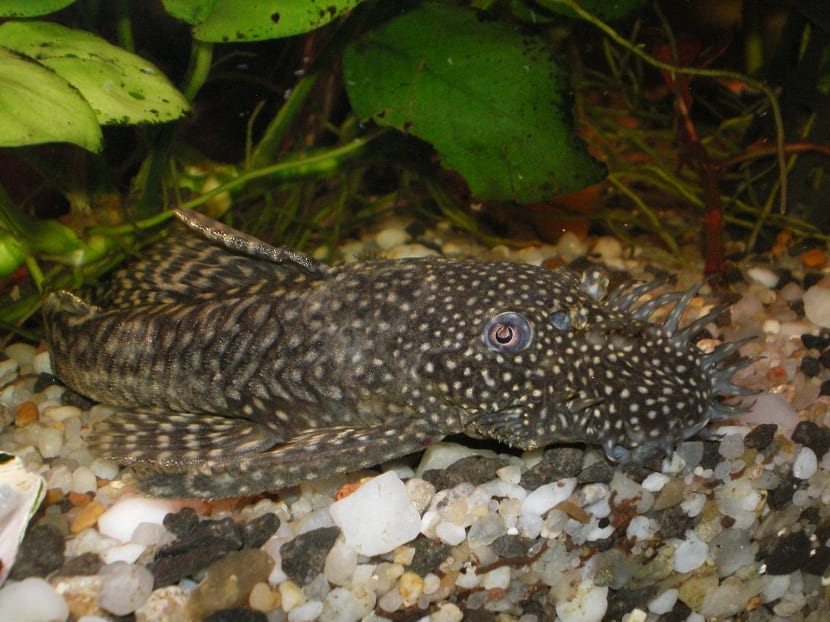
ancistrus is the gender de peces freshwater that belongs to the family Loricariidae of the order of the siluriforms. It is about de peces which are protagonists in aquarium bottoms. They have morphological characteristics that, although at first they do not attract much attention, end up being the king of aquarium backgrounds.
It has a rarity and a large group of species that make it quite well known. Do you want to know this genre de peces in deep? Here we will tell you all about their biology and the care necessary to maintain them.
Key features
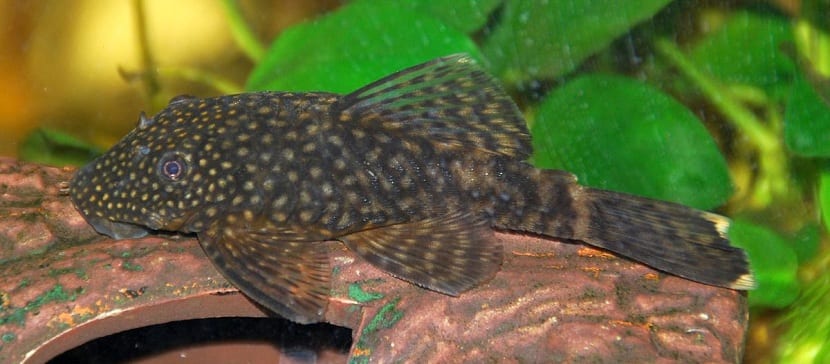
It is true that as aquarium bottom fish, they have their place reserved the corydoras. However, a pair of ancistrus are the ideal companions. It is one of the best options if we want to give life to our fish tank. In general, the lowest and most hidden areas of the aquarium are the poorest and saddest. However, these fish are ideal for navigating these areas and increasing the aesthetic beauty of the aquarium.
It should be noted that his entire body is covered by bony plates, except in the belly area. This makes it particular, since there is no other genre de peces that has similar characteristics. It has a suction cup capable of adhering to different elements. It uses it to suck food or extract cellulose from the wood that is found.
Regarding their size, males usually reach a length of about 15 centimeters. On the other hand, the females only get to measure 10 cm. Apart from size, males and females have some notable differences. The male has some barbels or tentacles on top of the snout. They are called odontoids. However, in females this characteristic range does not exist. There are some female specimens that do have tentacles, but they are located on the edge of the snout. In addition, their size is much smaller than that of the males.
Habitat and area of distribution
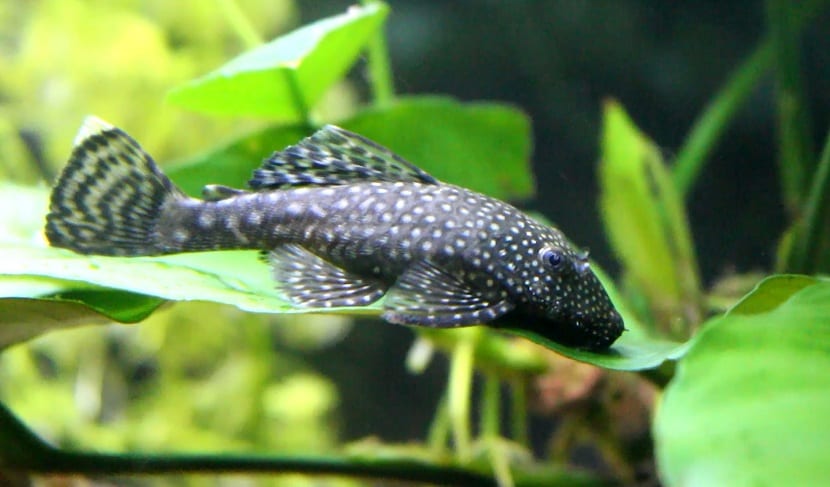
This fish has its origin in the basin of the Amazon and in different rivers of South America. Its preferred habitat is that stream that has great oxygenation. These areas have large amounts of algae that carry out photosynthesis and, therefore, have high oxygenation. But they also have areas with large amounts of decomposing organic matter.
In the areas where this fish lives, there is a strong presence of tannins. Although it is not usually common, there are some species of this genus that prefer clearer waters.
Ideal aquarium
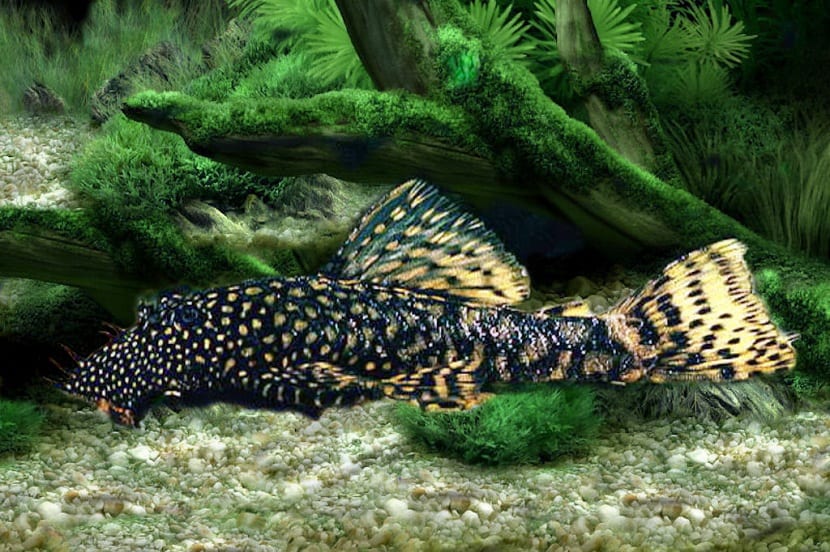
For these fish to live in good conditions, the aquarium must meet certain characteristics. The first thing to consider is the size of the tank. It has to be what big enough to hold 80 liters of water for each copy. If the volume is smaller, it will not be able to fully develop its size or show its behavior.
These species are quite territorial, so it is important that the aquarium has defined the different areas where the fish will be. Hiding places are needed for both themselves and other species. In this way they will be able to colonize different parts of the aquarium as needed.
In the case where you want to have a pair of ancistrus or more, the aquarium must be much larger in size. It is necessary so that there is no fight between the males and each one marks his territory. Good filtration is needed for the aquarium to have continuous currents and good oxygenation. In this way, the natural habitat of the ancistrus can be perfectly recreated.
As we have mentioned before, the ancistrus absorb the cellulose from the wood. Therefore, it is essential that there is wood in the fish tank.
As for the substrate, it is better to be quite thin to avoid possible cuts. You have to think that these fish will be moving around the bottom of the tank. Because of this, collisions with the edges of gravels can injure them.
The filtration must be able to withstand the heavy load of organic waste produced by the fish. Ideally, an oversized type of filtration.
Plants in the aquarium
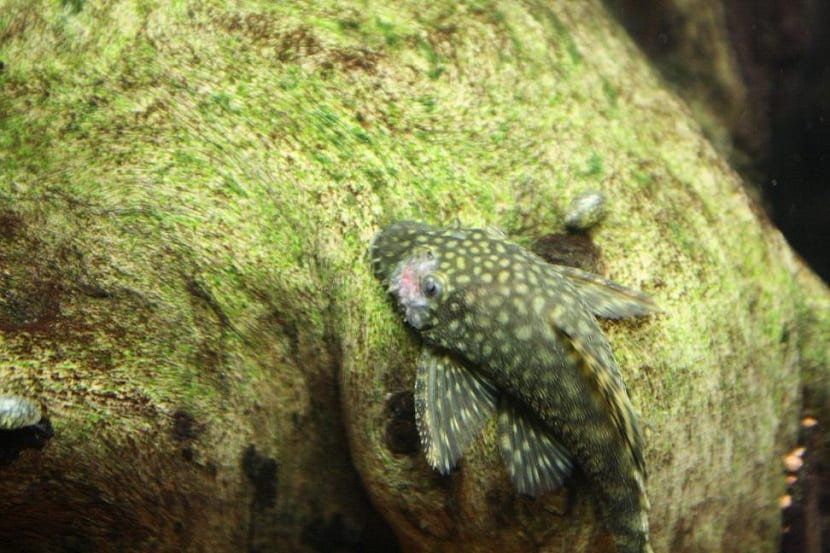
It is not recommended to have the aquarium planted with some original algae. These fish can become very gross and end up breaking all the stems or eating it. The ancistrus devastates the entire area where it passes. This helps us to know that we should not have upholstery or plants that impede the operation of water currents.
To these fish they love shady areas. A good planting idea is to have some broad-leaved plants like the great anubias, echinodorus, and cryptocoryne. These will grant you shady areas to hide and establish territory.
Food
Its nutritional needs are very simple to maintain. It can be fed with some commercial background pills, although it is better to give them a varied diet of fruits and vegetables. As always, the natural is better than the artificial. If we feed it in a healthy and balanced way, our ancistrus will grow with a more attractive color and better health.
When we have young, there are often problems with feeding. In this case, the fry are also fed fruits and vegetables. He can be given frozen and live food to increase his protein intake.
Reproduction
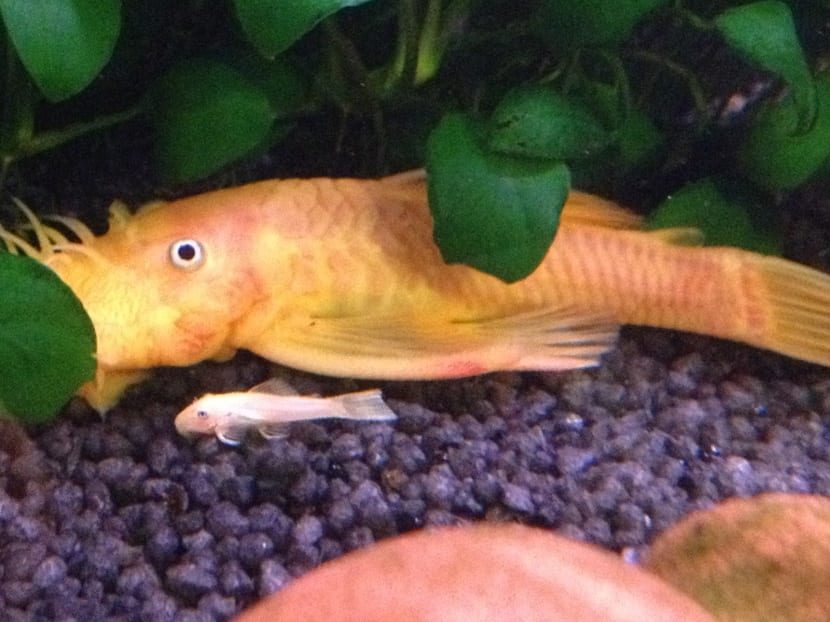
Breeding these fish in captivity is very easy. The males are in charge of taking care of the young after the laying of the females. When their yolk sac breaks and they are able to live on their own, the male stops caring for them.
For the females to carry out a greater number of spawns and with better quality we have to take a single pair of ancistrus to a separate aquarium. The aquarium must have a capacity for a volume of water of 120 liters and have a lot of wood. To make them safe, put them in a shelter where they feel calmer.
If we also have large aquariums of more than 300 liters of water we can keep two males with one or more females. Thus, each male will choose and mark one side of the aquarium as a territory. The female will be able to lay eggs with both males and have several clutches at the same time.
With this information you can have your ancistrus in good condition.